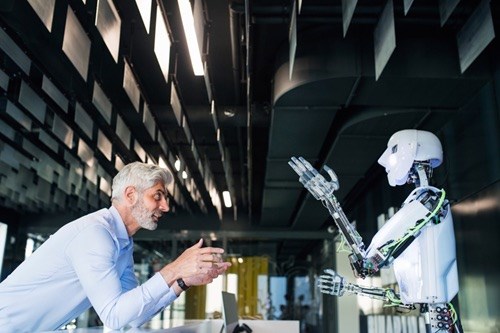


Robotics within the foodservice and hospitality industries has arrived and is here to stay, churning out some terrific results, enabling establishments across the globe to provide a smoother, sleeker customer dining experience. With apps, artificial intelligence, virtual reality and everything controllable via smartphones, it’s no wonder guests are taking the robot revolution in their stride.
Robots are especially important and, in many ways, a necessity within the food supply chain. With the demand for health conscious, freshly cooked, ‘Grandma’s Homemade’ style cooking - served as quickly as possible, it’s no small task for mere humans, so technology has to take the front seat.
Below are examples of robots currently in the workplace:
- Connie ‘The Concierge’ Robot, used by Hilton Hotels. Customers have the choice of human or robot to check-in, allowing them to escape to their hotel rooms without human interaction.
- Mr Flippy, the burger flipping robot arm provided by Compass, is cooking chicken tenders and flipping burgers for up to 50,000 customers daily. The robot can automatically detect the temperatures across the fryer, monitor the cooking process in real-time and also display the cooking time on a screen.
- Doughbot, the robotic pizza maker that mixes, kneads and cooks dough perfectly, making up to 600 bases per hour.
- Kuka Robot, the kitchen arm that can serve food, pack trays and respond in super-human timing.
- Makr Shakr, the robotic bar system that allows customers to create limitless cocktails, each precisely measured with a consistent taste profile, assembled by robotic arms.
Another increasingly popular and widely recognised form of technology to be introduced to the food service industry is virtual reality (VR), one of the key benefits of AR/VR technology is using it for consistent and thorough employee training. Currently, developing training materials can not only be costly, but it can also vary in quality. Often there can be an issue with mass training in which individuals don’t get the chance to have the one-to-one time they require.
However, the use of virtual reality can create a visual world and real-life situations to give consistent training to the individuals at a one-off cost. VR can create dummy situations for employees to practice some of the everyday issues and processes they will encounter and help them learn how to handle challenges that occur. This is also beneficial to the business, as once the software is created it will save time and money, which can be invested into other areas.
When it comes to new technology within the food service industry, it’s not just the robots that are cutting edge – we are too. Being a leader in food procurement, we understand that as the demand increases for a quicker, more efficient food procurement service, we must embrace change and open our arms to new technology in order to support the different strategies within the food supply chain.
At Foodbuy, we understand how hard it is to find that balance between food procurement and efficiency in the food service industry. For more information on how to reap the benefits of time-efficiency, whilst increasing profitability within the food supply chain, contact us here to start the conversation.
